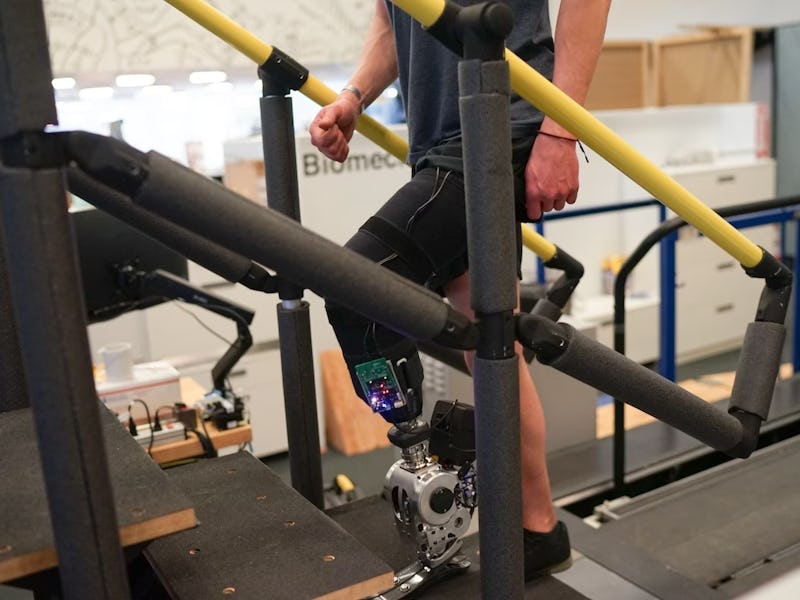A Groundbreaking Prosthetic Lets Amputees Literally Control Their Limb with Their Brain
This limb navigates obstacles more easily than traditional prostheses, a trial shows.

A new brain-controlled bionic limb has the ability to help people with leg amputations more easily navigate obstacles and walk more quickly, a new study published in the journal Nature Medicine shows. This scientific achievement allows the user to flex, point, and rotate the prosthetic leg by thought alone.
The technology will let users more easily walk on uneven surfaces and perform more complex movements. “Not only will they be able to walk on a flat surface, but they’ll be able to go hiking or dancing because they’ll have full control over their movement,” senior author Hugh Herr, a co-director of the Yang Center for Bionics at Massachusetts Institute of Technology (MIT), told The Guardian. Herr is a double amputee who lost both legs to frostbite during a rock climbing expedition in 1982.
Herr and his team worked with a total of 14 participants. Half used the bionic leg while the other half had traditional amputations. Installing the bionic device requires patients to have a new type of below-the-knee amputation surgery called agonist-antagonist myoneural interface (AMI) that seeks to replicate natural muscle relationships. Muscles work in pairs. The agonist muscle contracts while the antagonist muscle lengthens. This surgery helps re-establish this connection between nervous system and the bionic leg to replicate this relationship.
Traditional leg amputation cuts crucial muscle connections at the amputation site, while the AMI amputation reconnects them. Patients in the experimental group reported less pain and less muscle atrophy after this novel procedure, which is meant to help replicate muscular feedback in intact limbs. They also experienced less phantom limb pain, or discomfort in a limb that’s no longer present.
The bionic limb consisted of a prosthetic ankle, a tool that measures electrical activity from muscle movement, and electrodes on skin. The brain messages electrical impulses to muscles, which causes them to contract. These contractions then create new electrical signals, which the electrodes detect. The electrodes send these impulses to tiny computers in the prosthesis, which change the signals into force and motion.
Participant Amy Pietrafitta, who received the bionic limb, told the Washington Post how this process restored her ability to perform certain dance moves. “Being able to have that type of flexion made it so much more real,” Pietrafitta said. “It felt like everything was there.”